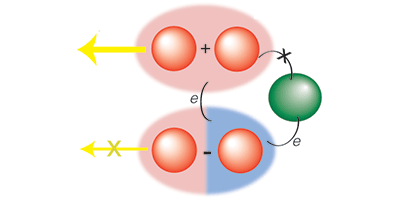Plant Power
Taking a cue from how plants convert sunlight into useful energy, researchers have designed a model system consisting of three molecules exposed to light. They show that quantum-mechanical effects can significantly boost the photocurrent the molecules can generate compared to the case in which only classical effects come into play. The theoretical scheme, which is presented in Physical Review Letters, could be the basis for designing more efficient solar cells.
When light shines on a photocurrent-generating material, its energy is absorbed by electrons, which become unbound and can move freely. These free electrons can then contribute to an electrical current that does work. But the newly unbound electrons can also quickly “recombine” elsewhere, which is what limits the efficiency of most photoelectric materials.
The light-harvesting molecules in plants, on the other hand, can, under certain conditions, convert photons to electrons with near perfect efficiency, and experimental evidence suggests this high efficiency may be the result of quantum-mechanical effects. Celestino Creatore and his colleagues at the University of Cambridge in the UK considered how quantum effects could enhance the photocurrent in a simple system inspired by the pigment-protein molecules found in plants: two “donor” molecules, each of which has an energy level that absorbs photons, flanked by an “acceptor” molecule that can transfer the excited electron away. Creatore et al. have calculated that quantum effects can mix the two donor molecules when there is a dipole interaction between them, creating two new states: one very efficient absorber, and one “dark level,” which blocks the path by which the electrons can recombine. The current generated by exposing this new configuration to light can be % higher than expected from classical physics alone. – Jessica Thomas





